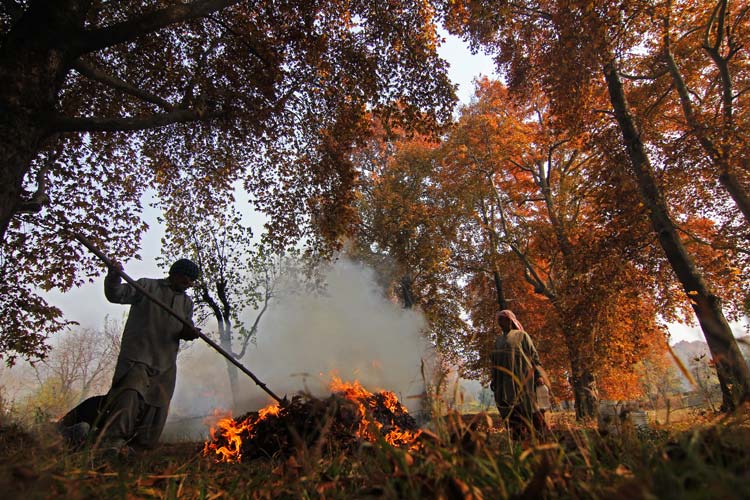Four villages in the remote picturesque valley of Gurez, almost treacherous 150 kilometers from Srinagar, have had no milk for past more than 10 days. Their cattle have deserted them – in herds – and crossed the Line of Control (LoC) to Pakistani side.
Since there is no mechanism to check such traffic or seek return of “ex-filtrating” or “infiltrating” cattle, the villagers of Boduaab, Malangpora, Angaikot, and Dander are trying to make a point to both the governments of India and Pakistan to intervene and save their livelihood.
Sarpanch Abdul Aziz Beig said that some 107 cattle have crossed over, which included 69 cows. The rest are bulls, buffalos and zombas (local hybrid of yak). The cattle crossed over to Pakistani side on June 20. “When we approached army posts, they were rude and said they were not (there) for guarding animals,” he said.
A Kashmiri officer jokingly tells villagers that since Gurez inhabitants never joined separatist campaigns and did not send their wards to militant training camps across the LoC, it is now their cattle crossing over to join militant ranks.
Jokes apart, local civilian authorities were attempting to press army to call a flag meeting with their counterparts to seek the return of cattle, which is the main source of livelihood in the region in absence of proper agriculture. The area with just 27 revenue villages with a population of 31912 is inundated with the army and other para-military forces, due to its proximity to Line of Control (LoC), housing 28th infantry division and a full artillery brigade, making up almost 26,000 troops.
Locals raised the issue at an ‘awami darbar’ (public meeting) organised by the General Officer Commanding 28 Infantry Division Major General SK Chakaraborty and Divisional Commissioner Kashmir, Dr Asgar Samoon, who incidentally has ancestral roots in the area. “I came to know about this issue for the first time. It is a difficult scenario and very complex that people are losing their cattle, their major (means of) livelihood,” he said.
Admitting that he could not give much hope to the villagers as the issue concerns governments of India and Pakistan, Samoon said he would take up the issue with Central government officials, who through a bureaucratic maze, may ask the Ministry of External Affairs to raise it with their counterparts in Pakistan. But, he was sceptical, whether anybody will take it up the issue as seriously in New Delhi.
Local government officials say the infiltration and ex-filtration of cattle was a perennial problem, but it was first time that they have crossed in such numbers. What do they do with infiltrating cattle? “We try to push them back and once they do not go, they are auctioned,” the officials at the sub-division magistrate said. The money earned through auction is deposited in government treasury. Police officials say, they had traced 66 sheep early this year infiltrating into this side. But were successfully pushed back.
Local Congress leader Hamidullah Mir is demanding a civilian arrangement between the two governments at the level of local magistrates to attend the problem of cattle crossing. “The arrangement also fits with the Prime Minister Dr Manmohan Singh’s vision of cooperative relationship between the two regions,” he said. A single cow here costs between Rs 35000 to Rs 40000, which is a big sum for an ordinary villager in this remote mountainous region.
Mir says when the government could successfully stop infiltration or ex-filtration of militants and even has placed a mechanism to return straying humans, the straying animals can be returned. Only recently, Pakistan Army returned two teenagers who had strayed into their territory in Poonch district. “An identical mechanism needs to be put in place to stop crossing over of cattle and to ensure their return to their rightful owners,” says Mir.















